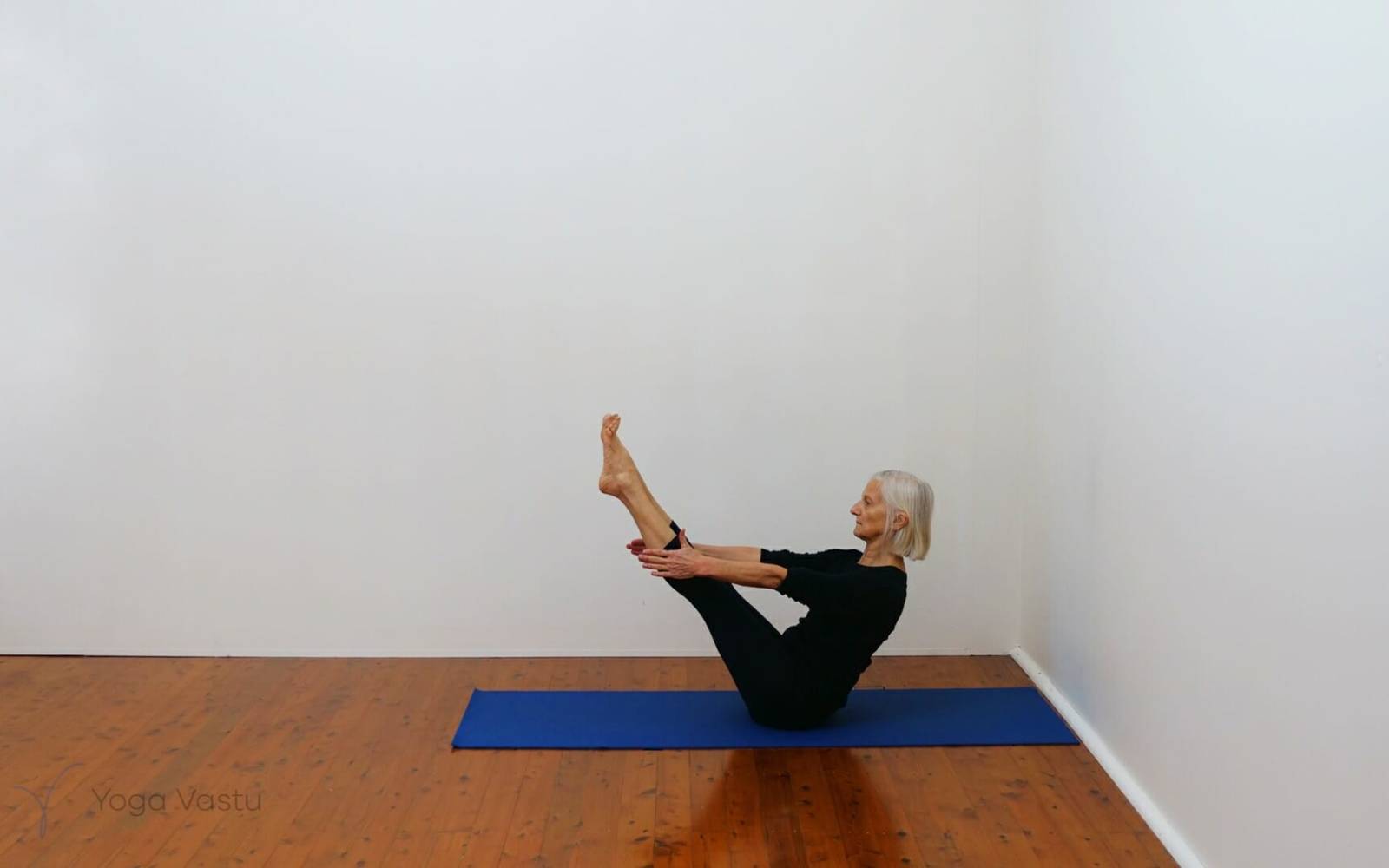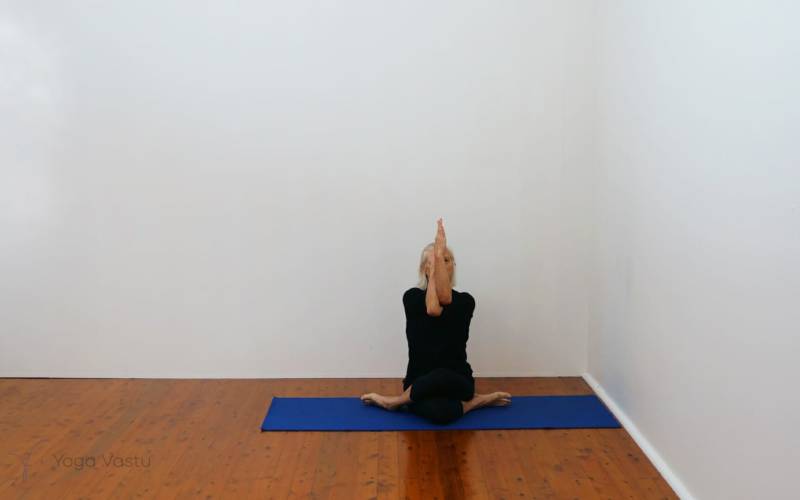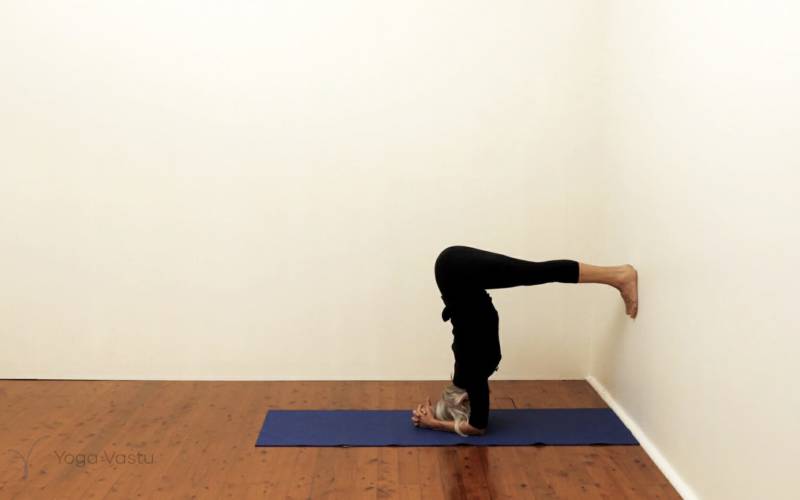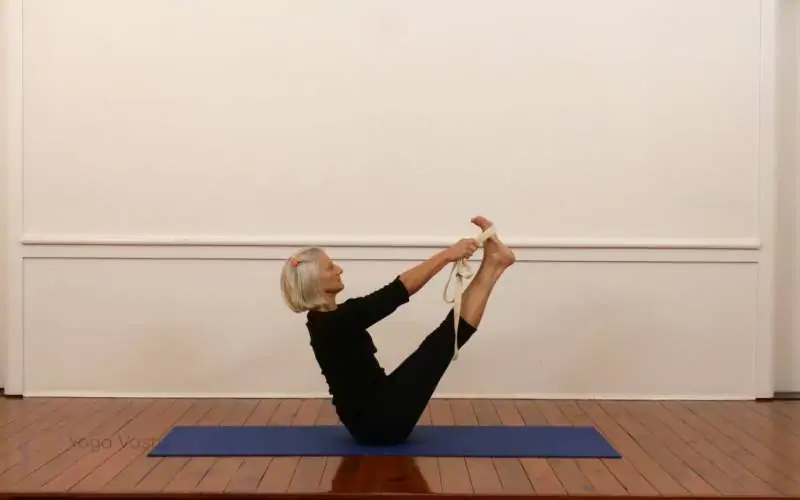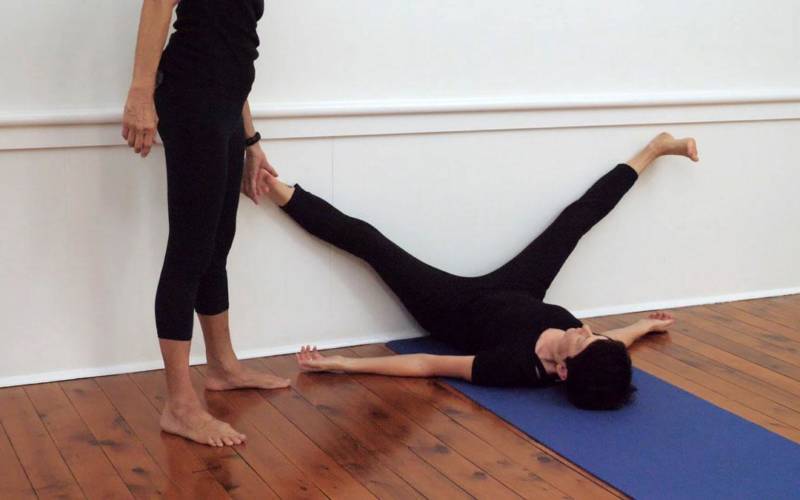How to perform Boat Pose
Start in Dandasana. Maintaining balance solely on the buttocks, recline your trunk slightly and lift your legs up. Keep your feet together, toes pointing up. Your feet should be higher than your head. Extend your arms forward past your legs.
What is Paripurna Navasana?
One of the so-called Boat Poses, it cultivates a sense of balance and strengthens the abdominal muscles. Every part of your body is lifted off the floor, thus moving the centre of balance to your pelvis. Your arms are activated and strong as your hands reach past the knees, staying parallel to the floor at shoulder-height.
Though challenging at first, this pose becomes second nature soon enough if practiced regularly. The challenge mainly comes due to the fact that this pose activates the typically weak abdominal muscles, as well as requiring the practitioner to stay focused on maintaining balance and resisting the pull of gravity.
When to use Paripurna Navasana?
Poses aimed at strengthening the abdominal muscles are typically incorporated in the middle or towards the end of the practice. This way the practitioner will have had the time to warm-up and relieve any pent up rigidity in the hamstrings and/or back muscles, allowing him/her to go deeper into the pose.
If you are new to Paripurna Navasana you can wrap a belt around your feet to help you achieve the flat back and straight legs necessary in the pose without exerting too much effort. This will give you an opportunity to focus solely on keeping your balance and strengthening your abdominal muscles. The time you stay in this pose will depend on your level. Start by holding it for a couple of breaths, increasing the time gradually.
Remember that no matter which asana you practice, the most important thing is that you do not restrain your breath. Once you feel your breathing becoming restricted, let go and lie down on your back. Hug your knees into your chest to help relieve tension in your abdomen.
When done right, this posture is highly beneficial to anyone suffering from digestive issues or bloating and, when practiced regularly, can help you shed excess weight around the waistline.
